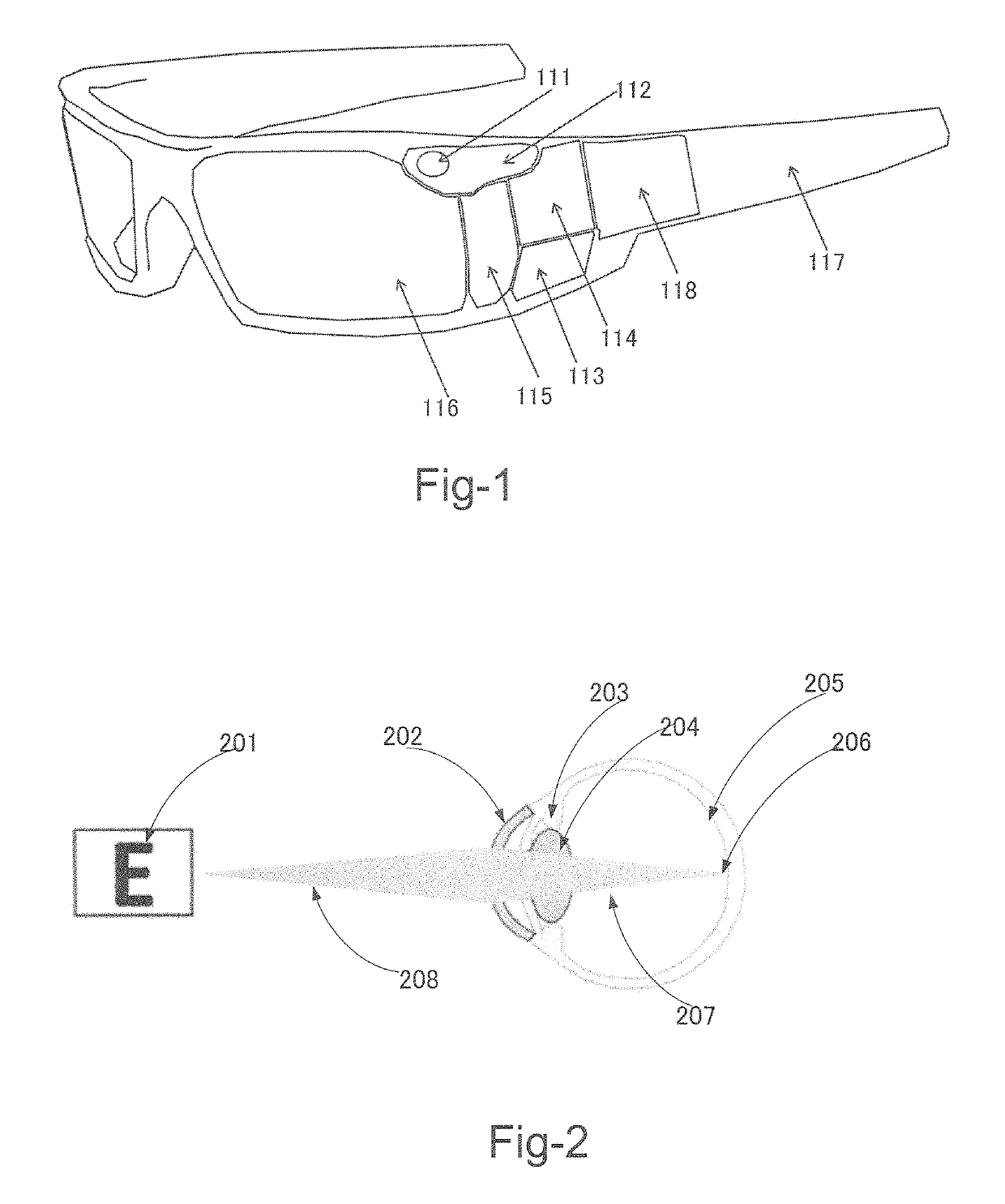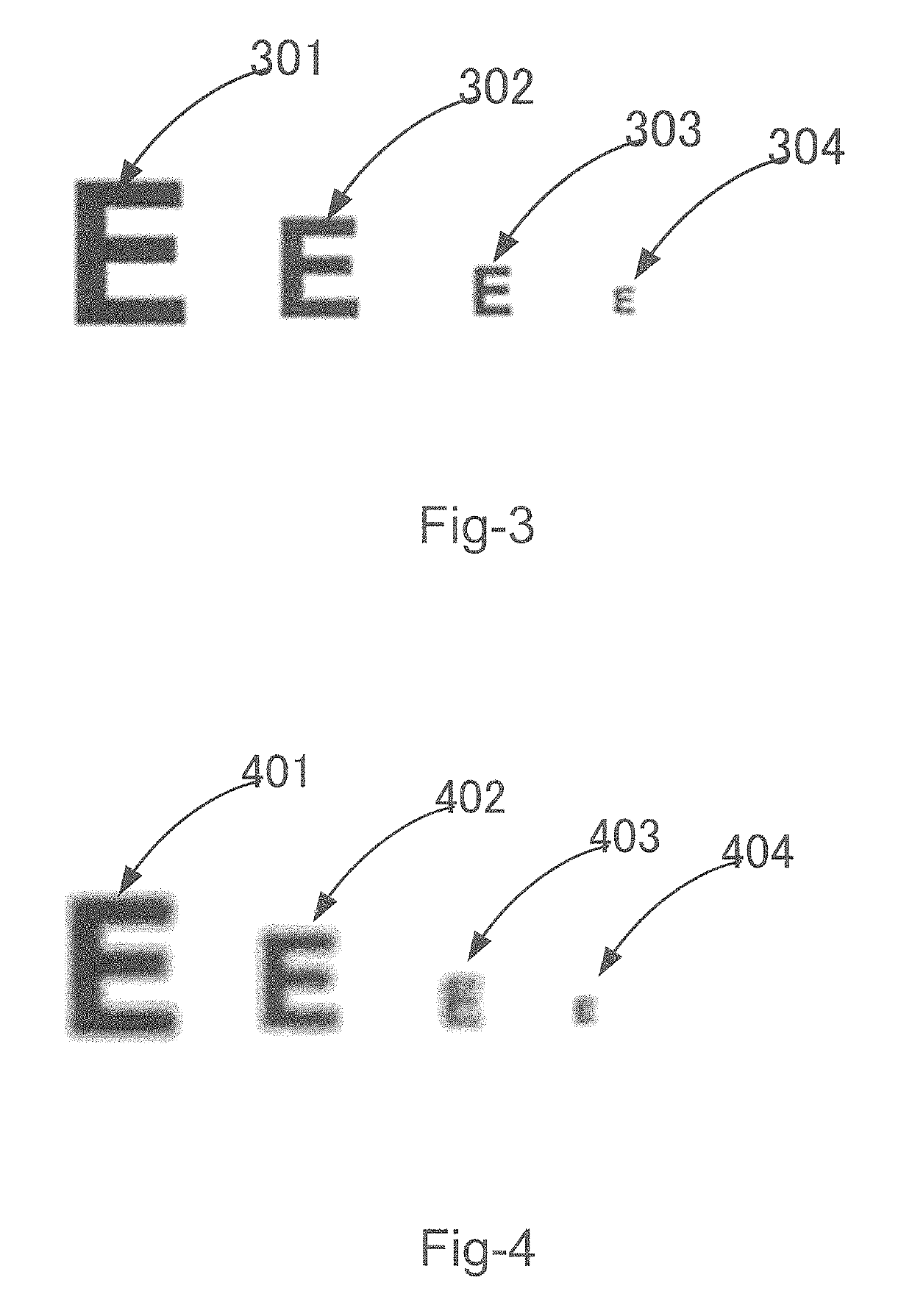See through display enabling the correction of visual deficits
a technology of visual deficit and display system, applied in spectacles/goggles, instruments, spectacles/goggles, etc., can solve the problems of not being able to correct for multiple objects at varying focal distances, many are opaque, and cannot be able to achieve the correction of visual deficits, so as to maximize the transmission of light, increase the level of sound differentiation, and reduce the effect of power consumption
- Summary
- Abstract
- Description
- Claims
- Application Information
AI Technical Summary
Benefits of technology
Problems solved by technology
Method used
Image
Examples
Embodiment Construction
[0076]This invention seeks to create such a visual sensory and display system via a visual image data flow as depicted in FIG. 17 through 20. Cameras are mounted onto a set of glasses pointed in-line with the user's visual field. The cameras convert visual images into image data, which is then sent to a modulation system where the image data is divided into specific focal distances. The modulation system may relay this information back to the camera to recapture the image through an optical focusing system, or the modulator may focus the object through digital algorithms. The modulator will ultimately output digital image data with objects with focal distances for multiple objects recalibrated to a distance that the viewer can readily perceive.
[0077]FIG. 17 shows an example of the embodiments of this invention with a hypothetical visual field with multiple objects with varying focal distances. The camera (1701) captures the objects (901, 902, 903 and 904 in FIG. 9) in various distan...
PUM
 Login to View More
Login to View More Abstract
Description
Claims
Application Information
 Login to View More
Login to View More - R&D
- Intellectual Property
- Life Sciences
- Materials
- Tech Scout
- Unparalleled Data Quality
- Higher Quality Content
- 60% Fewer Hallucinations
Browse by: Latest US Patents, China's latest patents, Technical Efficacy Thesaurus, Application Domain, Technology Topic, Popular Technical Reports.
© 2025 PatSnap. All rights reserved.Legal|Privacy policy|Modern Slavery Act Transparency Statement|Sitemap|About US| Contact US: help@patsnap.com



